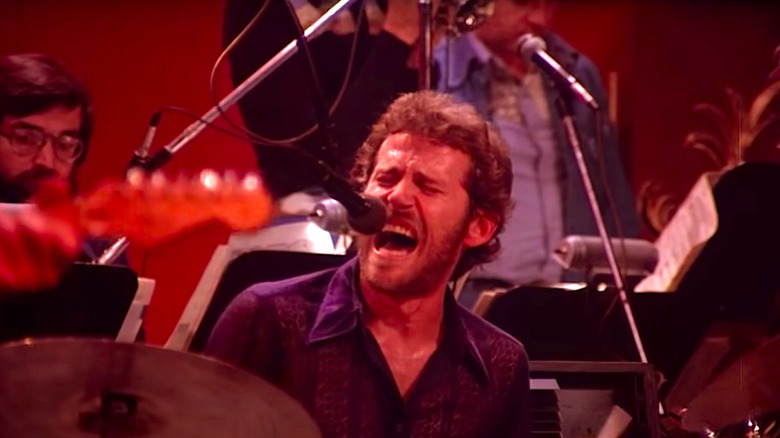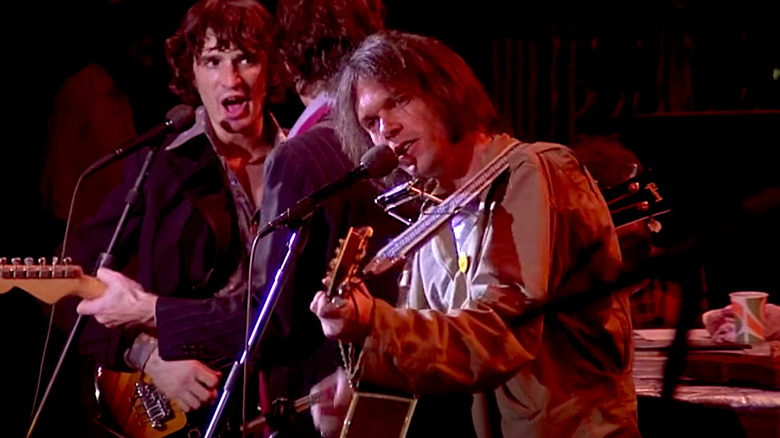The Reason Martin Scorsese Didn't Want Any Crowd Shots In The Last Waltz
There are a lot of concert documentaries out there spanning a wide range of genres and styles, but one thing that unites all of them is the fact that usually at some point in every film, there are shots of the crowd. Typically, the audience always looks like they're having a great time dancing and singing along to whoever is performing on stage, and often the shots of the crowd are infectious, creating an image of the concert experience that feels seductive and totally irresistible. If you didn't have the good fortune of attending the concert you are now watching on film, the footage of the show and the crowd typically makes you wish you could have been there.
There is one particular concert documentary though, that manages to avoid gratuitous shots of the crowd as much as it can, and that is Martin Scorsese's phenomenal musical masterpiece, "The Last Waltz." Choosing instead to focus solely on the musicians on stage, Scorsese made a deliberate decision to avoid the people there to witness this historical music event. However, Scorsese's unique choice of crowd-avoidance doesn't change our desire to go back in time and see the show live for ourselves. In fact, one could argue that it makes the viewer even more envious of those who got to attend, a deliberate filming choice that helps to elevate "The Last Waltz" — a concert documentary that is often lauded as being one of, if not the, best ever made — above your average concert documentary by turning the performance into an iconic time capsule of a very specific moment in music history.
A different point of view
Performed on Thanksgiving Day in 1976, "The Last Waltz" signified The Band's last performance as a group. Throughout the night, multiple big names in music — i.e. Neil Young (with the help of a little post-editing), Van Morrison, Bob Dylan, Joni Mitchell, etc. — performed onstage with The Band backing them. Scorsese captured it all on film, creating a documentary complete with interviews with the members of The Band. The result is a fantastic documentation of some of the biggest names in music at the time (one of my favorite moments is Van Morrison performing "Caravan" and enthusiastically kicking his way off stage).
Scorsese had one shot to get all the footage he needed — the show was performed on only one night — and his conscious decision to avoid shooting traditional footage of the audience had a purpose. Scorsese briefly talked about this decision in a 1978 interview about the film, stating, "I decided not to shoot audience, either. Because we've seen so many concert films and we see audience." This deliberate refusal to show the audience gives the film a uniquely intimate feel. Without a crowd to identify with, we're forced to relate to the musicians on stage, drawing us into the world of the performer rather than the world of the voyeur. Scorsese does admit that "we do see the audience from [the musician's] point of view," but this only adds to the feeling of being one with the artists and not the crowd.
This small but crucial choice is what separates "The Last Waltz" from so many other concert documentaries. In many ways, it helps to pull focus on the magnificent final performance and send-off of The Band, but it also helps turn the film into a final farewell to this special era of rock and roll before the '80s killed the radio star and the '90s gave birth to Britney. Scorsese's no-audience choice is what elevates the film above fandom and turns it into something else entirely. A snapshot of a specific moment in time, the last waltz before moving on to something new.

